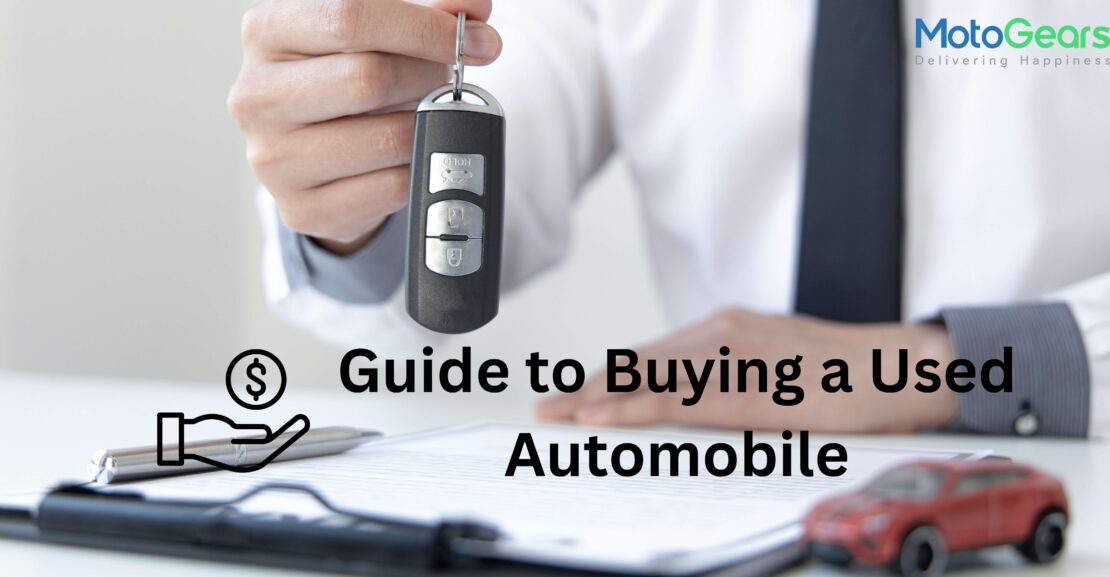Purchasing a used car is a fantastic way to get the most value for your money. However, it requires careful consideration and thorough inspection to avoid potential pitfalls. Whether you’re buying from a direct automobile dealer, an online portal, neighbors, or any other seller, here are the key points to ensure you make a smart purchase.
Inspect the Exterior Thoroughly
Start by examining the exterior of the vehicle meticulously. Look for signs of rust, dents, scratches, or any mismatched paint. Check the condition of the doors, side mirrors, bumpers, headlights, taillights, hood, and trunk. Pay special attention to areas that might have been repaired poorly after accidents. A well-maintained exterior is often indicative of the overall care the vehicle has received.
Tire Condition Assessment
Inspect all four tires for their tread depth and evenness of wear. Tires that are unevenly worn could indicate alignment issues, while tires with low tread depth will need replacement soon. Also, check the age of the tires; tires older than six years, even if they appear fine, should be replaced for safety reasons.
Paint Quality Check
Examine the paint job across the vehicle. Inconsistent paint shades or faded areas may hint at repairs or damage. Repainting parts of the car can be costly, so identifying these issues upfront is crucial. A good paint job not only enhances the car’s appearance but also protects it from rust and corrosion.
Interior Condition Examination
Step inside the car and scrutinize the interior. Check the dashboard, seat covers, headrests, armrests, and window switches. Look for signs of wear and tear, such as rips, stains, or odors. A well-kept interior suggests the previous owner took good care of the vehicle, and you’ll likely enjoy a more pleasant driving experience.
Air Conditioning Performance
Test the air conditioning system by setting it to the lowest temperature and lowest fan speed. The AC should cool the cabin quickly and operate without making unusual noises. Effective air conditioning is vital, especially in warmer climates, and any issues can be expensive to fix.
Steering and Handling Evaluation
During the test drive, pay close attention to the steering. It should feel smooth and responsive, with no strange noises when you turn the wheel. Properly functioning steering is crucial for safety and driving comfort. Any stiffness or unusual feedback could indicate problems with the steering system or alignment.
Engine Sound Check
Open the hood and listen to the engine while it’s running. A healthy engine should run smoothly and quietly, without any knocking, ticking, or other unusual noises. Engine problems can be costly to repair, so ensure the engine sounds healthy and performs well under various driving conditions.
Gearbox Functionality
Test the gearbox thoroughly. For manual transmissions, ensure that shifting through the gears is smooth and precise. For automatic transmissions, check all modes—Drive (D), Reverse (R), Neutral (N), Park (P)—and ensure there are no delays or harsh shifts. The gearbox is integral to the vehicle’s performance and any issues here can be expensive to address.
Spare Tire Condition
Don’t overlook the spare tire. Ensure it is in good condition, properly inflated, and ready for use. A missing or damaged spare tire can leave you stranded in case of a flat, and it’s often an indicator of how well the car has been maintained.
Take an Extended Test Drive
Take the car for an extended test drive to get a comprehensive feel for its performance. Pay attention to acceleration, braking, steering, and overall handling. A smooth, responsive drive suggests that the vehicle is in good condition and has been well maintained.
Suspension and Shock Absorber Inspection
During the test drive, listen for any noises coming from the suspension and check for a smooth ride. Unusual sounds or a bumpy ride might indicate worn-out suspension components or shock absorbers, which can be costly to repair. A good suspension system is essential for ride comfort and vehicle stability.
Tool Kit Verification
Ensure the vehicle comes with a complete tool kit, including a jack and tire-changing tools. Having the necessary tools on hand is crucial for handling minor repairs or emergencies on the road.
Document Verification
Carefully review all necessary documents, including the current Registration Certificate (RC), insurance papers, and Pollution Under Control (PUC) certificate. These documents are essential for legal ownership and to ensure the vehicle is roadworthy.
Bank No Objection Certificate (NOC)
If the car was financed, confirm that the bank has issued a No Objection Certificate (NOC). This document verifies that the loan has been fully paid off, freeing you from any financial liabilities associated with the previous loan.
Instrument Cluster and Light Check
Ensure that all signals and lights on the instrument cluster are working correctly. This includes the speedometer, fuel gauge, temperature gauge, warning lights, and indicators. Functioning instruments are crucial for monitoring the vehicle’s status and ensuring safe operation.
Third-Party Inspection
Consider hiring a third-party auto inspection service or getting the vehicle checked at an authorized service center. A professional inspection provides an unbiased evaluation of the car’s condition, identifying any hidden issues that might not be apparent during a casual inspection.
By following these comprehensive steps, you can confidently navigate the process of buying a used car and make an informed decision. A thorough inspection and due diligence are key to finding a reliable vehicle that meets your expectations and provides excellent value for your money.
For further assistance, connect with us at +91-858-787-8700. Our Free Assistance service is here to help you find the perfect used car in excellent condition. Happy car shopping!


It is really useful.